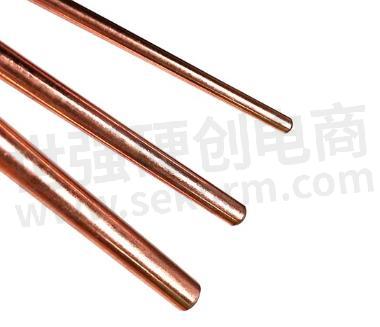Heat Pipes Versus Vapor Chambers: What‘s the Difference?

There’s lots of buzz on the internet about Heat Pipes and Vapor Chambers being amazing additions to air cooled heat sinks. But when it comes to heat pipes versus vapor chambers, what's the difference?
Two Phase Cooling
Both heat pipes and vapor chambers utilize the same two phase cooling process. A liquid evaporates at the heat source and becomes a vapor. This vapor travels through the cavity of either the heat pipe or vapor chamber to a cooler place within the pipe or chamber and condenses. By capillary action, the condensed liquid travels back to the hot spot through the wick.
What Makes a Heat Pipe a Heat Pipe?
A heat pipe is very close to what it sounds like. It's a pipe used to conduct heat, of course. But the pipe has been altered to contain a wick and has been sealed to retail all the fluid installed into the pipe. While heat pipes can be made from a wide range of materials, copper and water are the favorites for metal and working fluid. Copper already has a high conductivity, commercially available, and is straightforward to manipulate during the manufacturing process. The working temperature range between freezing and evaporation for water covers most applications, so the majority of heat pipes use water within them.
What Makes a Vapor Chamber a Vapor Chamber?
Vapor chambers are similar to a heat pipe since it houses vapor within a chamber, instead of a pipe, hence "vapor chamber". Vapor chambers also have a wick to transfer fluid back to heat sources. Instead of a pipe to house this vapor space and wick structure, vapor chambers typically use two plates sealed together to keep the fluid in.
Heat Pipes versus Vapor Chambers
In comparing heat pipes versus vapor chambers, the biggest difference is the direction of heat spreading. Heat pipes have a high effective thermal conductivity focused along the axis whereas vapor chambers have a more two dimensional, planar heat transfer direction.

We can transfer heat away in more directions with a vapor chamber, so two dimensions are better than one, right? Not always. Current construction methods of vapor chambers make them a little more fragile when it comes to compression strength. Most applications require a mechanical load on the heat sink to ensure really good contact to the thermal interface material and device being cooled. Sometimes this load is too much for a vapor chamber to handle without compressing and destroying the vapor space and potentially damaging the wick structure as well.
On the other hand, heat pipes generally have less unsupported space than vapor chambers do. This enables heat pipes to handle those mechanical stresses better. And the fun part is that we can bend heat pipes. We can translate our high heat transfer rate from one dimension to something a little closer to a full two dimensions by bending heat pipes into more optimized shapes that better suit specific applications.

Two Phase Cooling in Aavid Genie
Aavid Genie uses a comprehensive model for simulating a heat pipe. For now, Aavid Genie has a fairly simple heat pipe interface and can only handle straight heat pipes embedded in the base. The Genie also will evenly space out your heat pipes near your heat sources. But for getting an idea of how a heat pipe can improve your base heat spreading, it’s a great tool.
Aavid Design Engineers are well versed in some of the crazy ways we can use heat pipes. If you have some questions on how else Aavid can apply heat pipes, especially for your specific application, feel free to contact them.
- +1 Like
- Add to Favorites
Recommend
- Flow Types in Aavid Genie: Ducted Versus Bypass Flow
- Sekorm Became an Official Authorized Distributor of Aavid
- Boyd Acquires Sensata’s Thermal Test and Controls Business
- Aavid‘s Liquid Cooling Systems: Modular or fully customized liquid cooling optimized for improved heat dissipation in condensed volumes
- AAVID Provides A Thermal Solution Optimizing Internal and External Thermal Radiation and Internal Conduction
- Boyd‘s New Art Facility in Mexico Features Automated Manufacturing and Assembly Processes
- Boyd Corporation Acquires ThermaMasters, Further Expanding Liquid Cooling Offerings
- An Industrial Grow Lamp Company Chose Boyd, to Design and Manufacture Their Hi-lumen Industrial Led Grow Lamp
This document is provided by Sekorm Platform for VIP exclusive service. The copyright is owned by Sekorm. Without authorization, any medias, websites or individual are not allowed to reprint. When authorizing the reprint, the link of www.sekorm.com must be indicated.






























































































































































































































































































































































































































































































































































































































































































































































































































































































